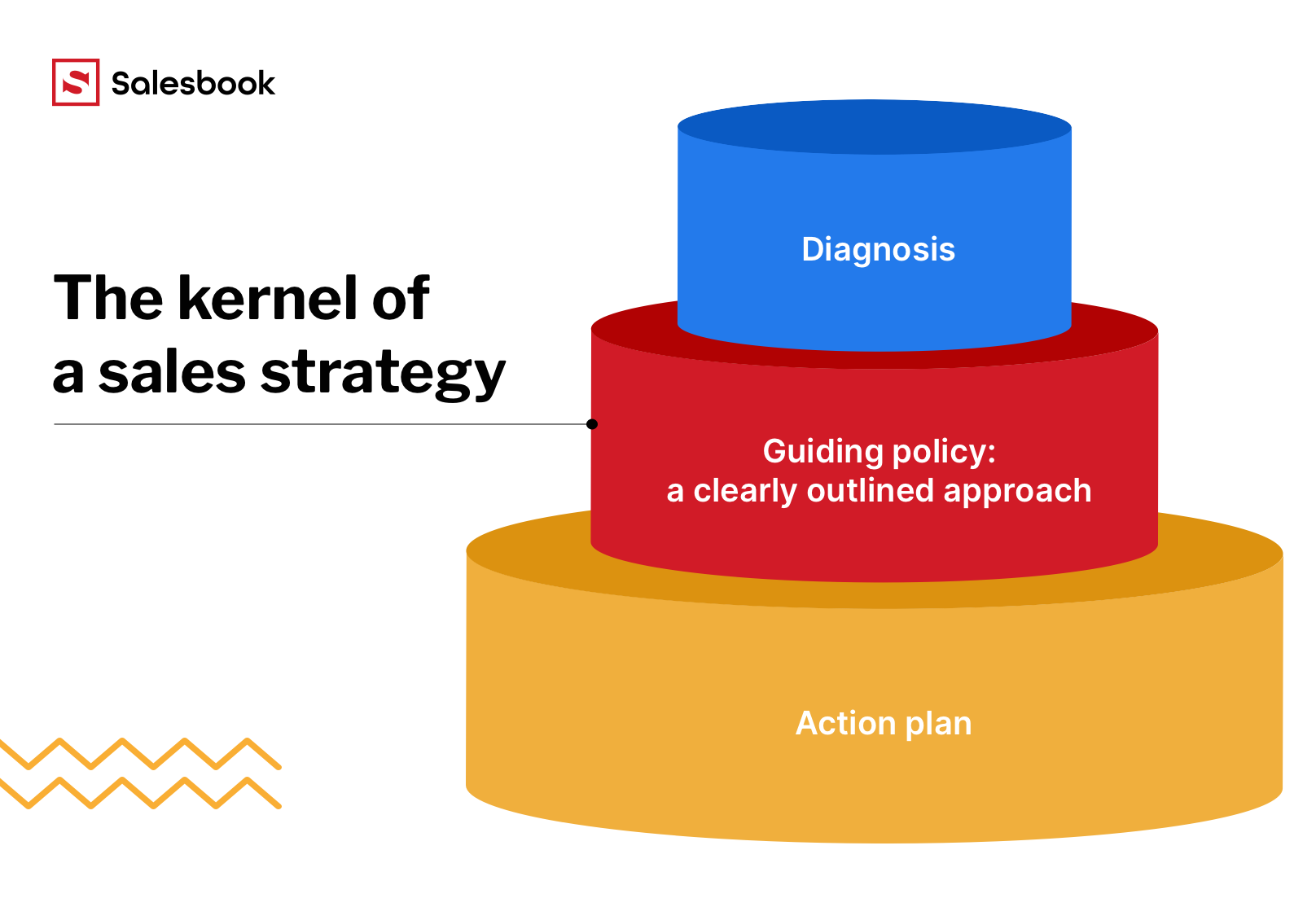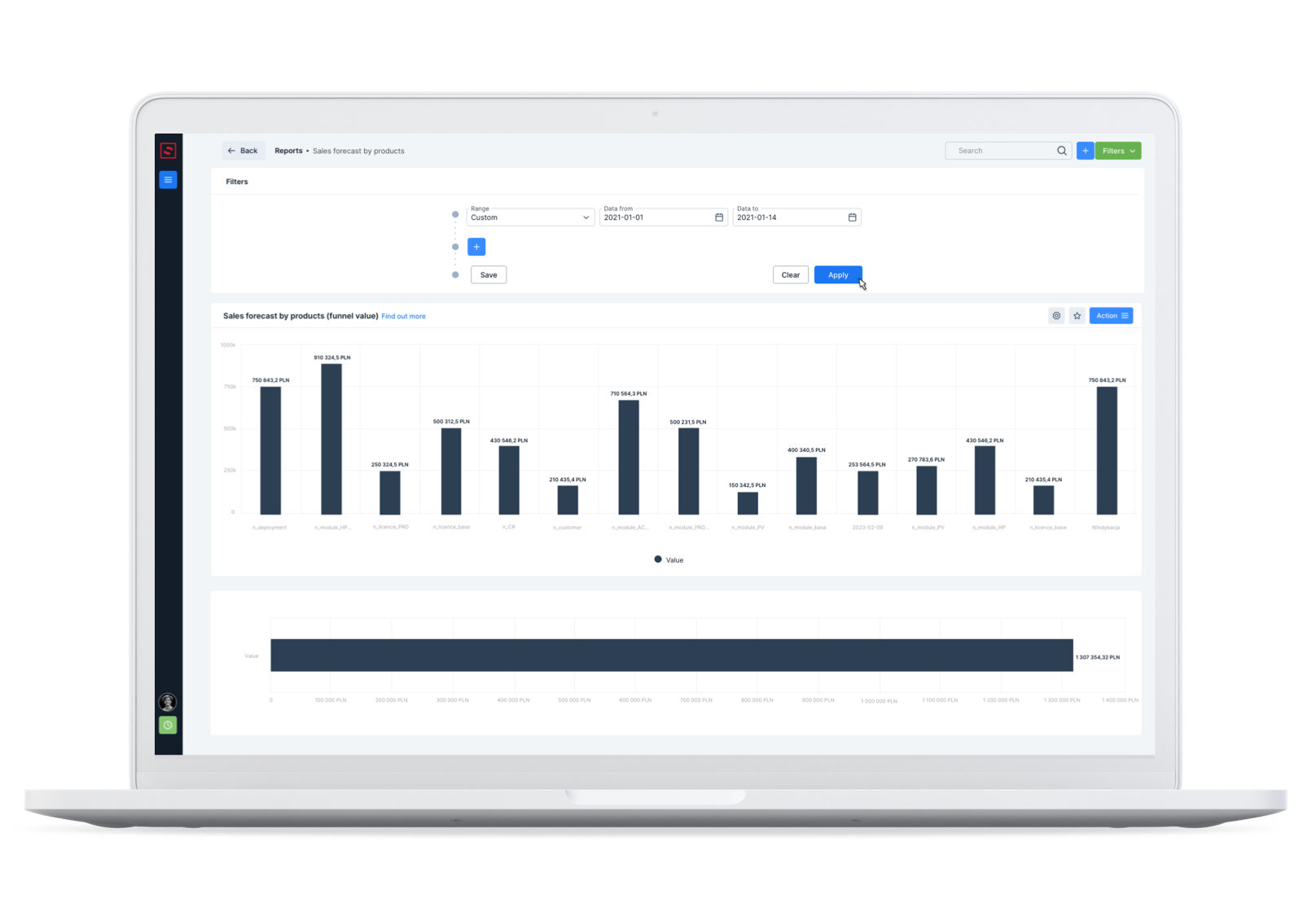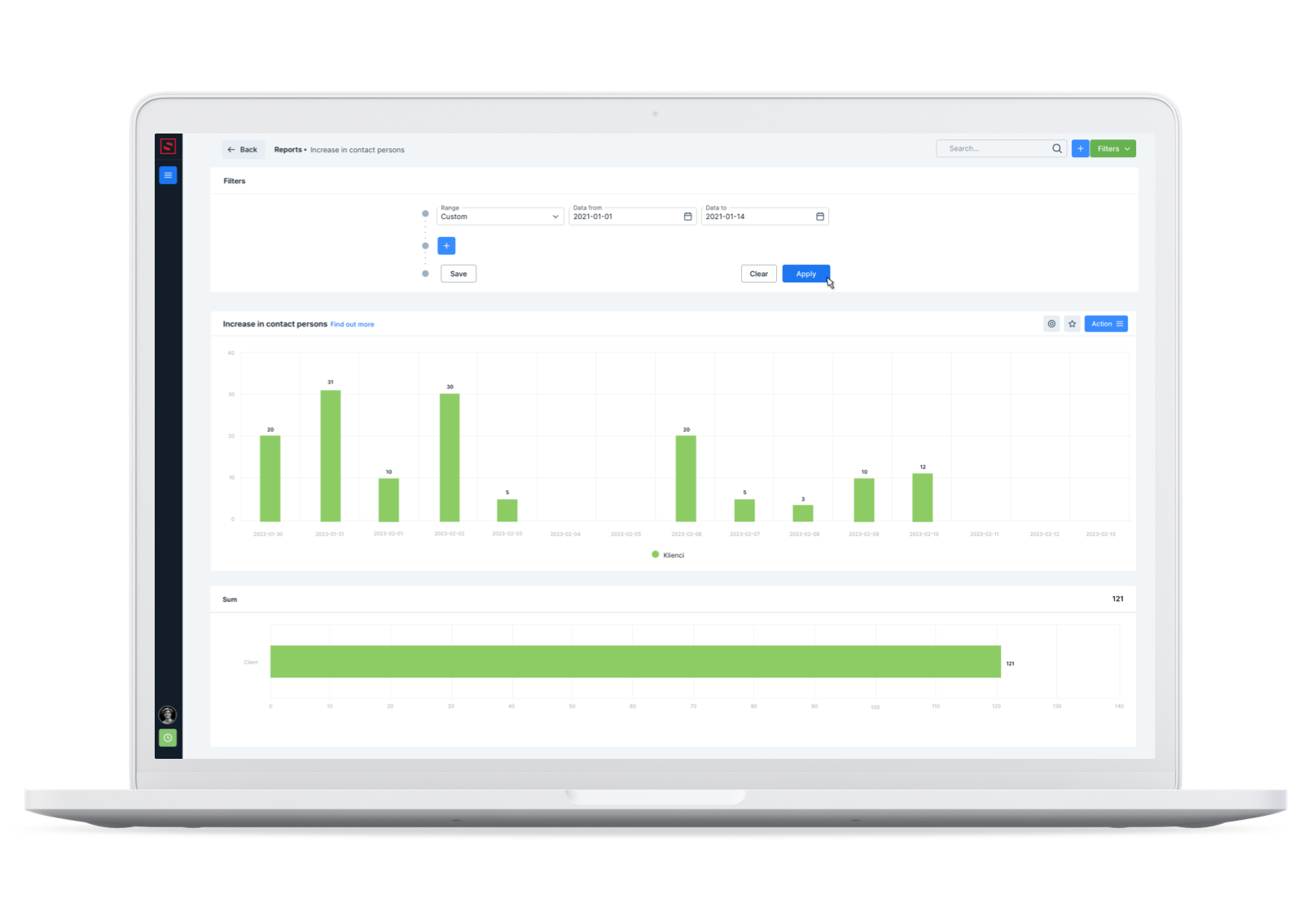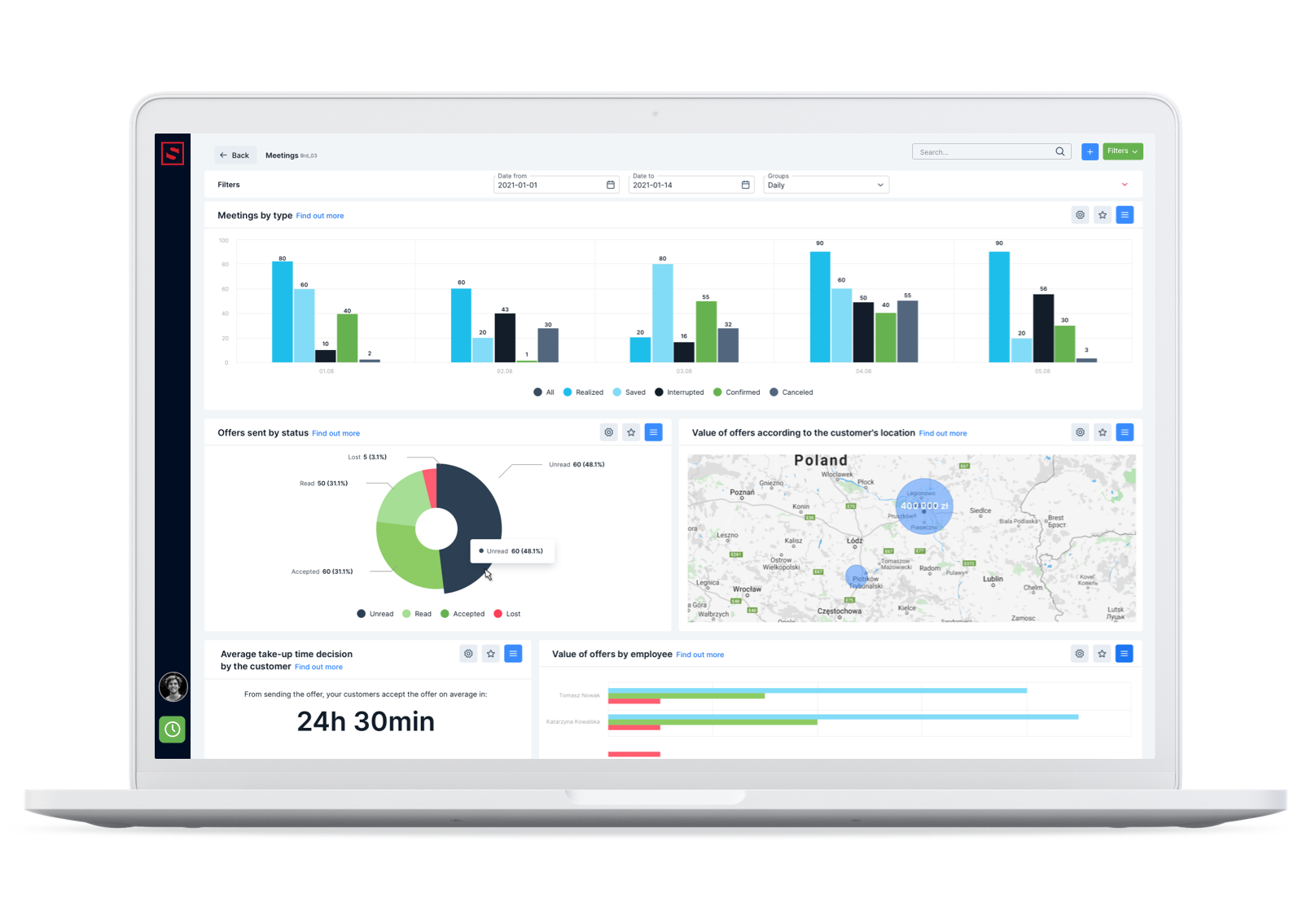What is a sales strategy?

A sales strategy is a plan that every company needs to achieve sales goals. How to create successful sales strategies, and what should they contain? Read our article and learn more about builiding effective sales strategy.
What is a sales strategy?
A sales strategy is – in simple words – a well-thought sales process that includes your company’s sales goals and a way of reaching target customers.
It is hard not to agree with Richard Rummelt, the management expert, who says:
“A good strategy is a coherent set of analyses, concepts, policies, arguments, and actions that allow achieving an important goal. This is what most organizations usually lack. Instead of these elements, they only have many goals and initiatives that symbolize progress. But they do not have any coherent plan to make that progress, except spend more and try harder“.
A sales strategy is not a general direction that a company is willing to take. It should not contain any vague values written down somewhere on a sheet of paper and forgotten by employees.

Building a sales strategy does not rely only on setting up sales goals, making strategic sales plans, or choosing the way your product or service will be distributed among existing customers or new customers. A good sales strategy should describe the way your company wants to move forward.
The strategy is a complex activity that encompasses the substantive preparation of salespeople to hold professional conversations with clients. It also includes creating offers that help your company to stand out in comparison to other businesses. According to Rummelt, the sales strategy is finding a way for a given company to develop and grow.
In other words, the sales strategy plan takes into consideration many factors to increase revenue. Moreover, if you create an effective sales strategy, you know which good practices your company should follow for future growth.
What are the types of sales strategies?
In relation to the behavior of sales reps and sales planning, we can divide sales strategies into inbound sales strategies and outbound sales strategies.
Inbound sales strategy – sales reps do not persuade target customers to buy products, instead of this, they treat potential paying customers as individuals.
A sales rep tries to get to know a target customer, their problems and needs. Thanks to this, a salesperson can create a personalized offer. This kind of sales strategy is based on educating customers and providing them with information.
Outbound sales strategy – this is the sales strategy that relies on searching for clients by sales reps – persuading, calling, sending e-mails, and arranging meetings.
A sales process is complex, therefore, companies decide to mix these sales strategies to achieve their revenue goals and be more successful.
The components of a sales strategy
Regardless of how a sales process is complicated, it should consist of several layers. According to Rummelt, the good sales strategy has a logical structure called the kernel. It is a mixture of activities and thoughts that are decisive factors as far as a successful sales strategy is concerned.
Sales strategy by Rummelt
The kernel of a sales strategy consists of three elements:
- diagnosis – it defines the nature of a company and a challenge, and tells a lot about problems and difficulties. It is an analysis of a current situation and points out essential aspects. The diagnosis allows you to combine facts and patterns in order to create certain rules. Thanks to this, you can focus on some elements more than others, it is the beginning of creating a sales plan,
- guiding policy – it describes how you will deal with problems that occur during a diagnosis. This is an approach that allows you to cope with obstacles. It is not the same as vision or goal. The guiding policy is the way of action,
- set of coherent actions and allocation of resources – it relies on creating a plan and choosing the right employees to put the theory into practice. Sales representatives and other employees engaged in this process have to know how this idea will be implemented, and how it will affect the company (what strategic sales plans are),

Sales strategy by Kotler
On the other hand P. Kotler and the “Encyclopedia of Management”, point out such elements of a sales strategy as:
- prediction – searching for new customers by sales teams, defining who is your target audience – your qualified leads can be new clients,
- planning – this part of the sales plan relies on defining the amount of time devoted to new and existing customers, and considering the importance of customer relationships,
- communication – informing customers about your products or services, it can be an essential part of successful sales conversations,
- sales process – this element is strongly based on customer relationship management, it includes the moment when a sales rep contacts a target customer, presents an offer, answers questions, and closes a deal at the end,
- customer service – after efforts on customer acquisition it is time to take care of customer service, it relies on discovering clients’ pain points, providing them with your technical support, and setting up the details of cooperation, it should be done before the delivery of a product or service,
- gathering information – this part of a sales plan is based on doing analysis and getting to know current market trends,
- allocation – the way customers decide if products or services are unavailable.
You are aware that a sales strategy can consist of different elements. Some sources distinguish the differences between a strategy and a strategic sales plan. (A strategic sales plan can be a part of a broader strategy).
Obviously, is hard to think critically about your own company and the sales activities of sales and marketing teams.
Creating professional sales tactics can be demanding. Therefore, if you want to develop a successful sales plan, you need to have a pattern of behavior that your sales teams have to follow.
A sales strategy plan that is good to follow
If you want to create a great sales strategy, start with an observation of sales processes and business processes in your company. You need to see the bigger picture to perceive the actual situation.
The elements important to strategic sales planning:
- Make an analysis of the current situation in your company. If you want tobuild good strategic sales plans in the future, you must be aware of your strengths and weaknesses. This kind of knowledge requires absolute honesty – you must ask a lot of inconvenient questions about business objectives, sales data, the quality of customer service, or the competencies of sales leaders in your company. You are not able to develop a credible sales plan without that.
What is good to know?
How many sales reps work in your sales teams?
Do you have a professional sales department?
How often do salespeople contact customers?
How do they take care of customer retention?
Have you defined a sales pipeline and know the sales pipeline stages?
What do sales managers and reps know about products or services? Do you provide any professional sales training?
Do you use sales enablement tools to affect sales performance?
What kind of marketing strategy does your company have? Are your marketing strategies successful?
What are your budget, revenue, and profit? What affects all these factors?
- Get to know your potential customers. Before you optimize your sales productivity, write a business plan, or set up sales goals, you should get to know your customers and a target market. Define your potential customer: their age, sex, income, education, occupation, needs, or doubts. Your customer profile is very important. If you know your clients better, your chances to satisfy their needs will increase.

- Set up achievable goals in your sales plan. Sales planning relies on defining sales goals. However, you need to remember that your sales plan should include the goals that are SMART: specific, measurable, achievable, relevant, and time-based.
A strategic sales plan has to be preceded by an analysis of various sales documents. Look at the available sales data, sales cycle, the effectiveness of sales teams, and the details of your offer. Remember that your sales goals have to be realistic. Too low sales goals will not lead to a sales pitch, on the other hand, too high sales goals will be unreachable and discourage sales professionals in your organization.
- Create a good sales plan for your sales department. Your sales teams must be engaged in sales activities and know how to convince a potential client.
You have done an analysis of your sales organization, however, are you sure that you have the most important information? What are the necessary elements of the most effective meetings with customers? Do salespeople use scripts? Does your company have an established standard of customer service? What are the selling methods and techniques that you use to achieve sales plans?
If you have no knowledge about this, think about redefining your strategy and sales plan.
- Remember that sales and marketing cooperate. Sometimes a sales strategy is combined with a marketing strategy. It defines what actions should be undertaken to affect lead generation. Moreover, it creates sales projections based on marketing campaigns or describes the sales pipeline stages.

- Create a sales pipeline. If you work on a sales strategy, do not forget about a sales plan and the behavior of your customers. We have written about a sales funnel on our blog, therefore, we will not continue this topic in this article.
- Do not forget about communication. It is wise to enrich your sales planning and strategy with a way of communicating with your customers. Choose the channels of communication, work on the language of your brand, and define a good practice that you want to follow.
- Evaluate your sales plan and strategy. The fact that you will create your sales strategy and sales plan does not mean that your objectives will always remain the same. The industry trends, sales data, the situation in the world, new technologies, and your competitors. All these factors influence your strategic sales plans and the overall strategy. You have to change the objectives if it is necessary. Remember to do a competitive analysis to know the sales tactics or strategic sales plans implemented by other companies.
Richard Rummelt mentioned the importance of the evaluation of a sales strategy:
“A good strategy is based on laboriously acquired knowledge, and each new strategy is an opportunity to gain new experience. From a scientific point of view, the new strategy resembles a hypothesis, and its implementation – an experiment. As results emerge, effective leaders accumulate knowledge about what works and what does not and adjust strategies accordingly.”
Why do you need a sales strategy in your sales process?
Now you know what elements comprise a good sales strategy, and you can create your own strategic sales plan. The next step is to realize what the advantages of implementing the strategy are.
- Building your own sales plan and strategy allows you to get to know your customers (target market) better. You deepen your knowledge about their needs, plans, problems, and challenges. Thanks to this information, you can prepare better and personalized offers and make more business decisions that are accurate.
- If you are aware of what professional customer service is, you can implement this standard not only in the entire team but also in an organization.

- Your sales plan contains hard data, therefore, you can implement processes that lead to your customer success and cause your revenue growth.
- You know that your sales plans and marketing campaigns are effective, so you invest your money wisely.
- You have broad knowledge about processes in your company and the employees that you need. You hire only professionals who help you close more sales.
How to implement a strategic sales plan with Salesbook?
You are aware that it is impossible to implement a strategic sales plan without effective sales analytics and other important processes. However, to create a detailed and well-developed strategic sales plan, you need reliable data.
A modern CRM system and an app from Salesbook support salespeople at every stage of the sales process. Moreover, it gives you the exact data that you need to create your sales plan.
Salesbook gathers hard sales data:
- number of leads and changes in their statuses in a given time,
- increase in the number of customers in relation to salespeople,
- number of meetings within a month,
- number of offers in a given time,
- average time of a call center campaign.
These are only examples of data that you can check with our tool. Salesbook offers an extended Reports module that provides you with all the necessary information you need.

Gain information about your customers
The next step in a sales plan and strategy is an analysis of customers. Salesbook can help you with that too.
Thanks to Salesbook, you know:
- what cities/regions are your clients from?
- what are the most effective sales activities/campaigns?
- what do clients buy most often?
- how much money can they spend?
- what are the most profitable months/weeks/years, and why?
- what communication is the most effective?

Set up realistic revenue goals for your sales reps
Salesbook can provide you with more information about your business. If you want to make a strategic sales plan and set your goals, Salesbook will help you in several ways:
- in the Reports module, you will find summaries of the most important information about the value of sales in relation to products, chosen time, or a given sales rep,
- you can make predictions about sales in the future, moreover, you keep an eye on current sales in relation to a given salesperson,
- you monitor KPIs (key performance indicators) thanks to the special KPI module in Salesbook.

Use qualitative data in your sales process
Thanks to Salesbook, you obtain hard quantitative data, but you gain also qualitative data.

What can you know from Salesbook?
- You can analyze every sales meeting step by step.
- You can check what elements of your offer are the most effective and improve your strategic sales plan.
- Thanks to your knowledge, you can optimize meetings.
- You will know what communication is successful.
- Thanks to the Central Library, you will know which marketing folders are eagerly used by salespeople.
A sales strategy and strategic sales plan are essential to your company. So it cannot be written on the basis of random data. Salesbook is a tool that allows you to set up realistic goals and help you in achieving success.
Try Salesbook
Do you want to set your strategic sales plans with Salesbook? Try the free demo.
Table of Contents







